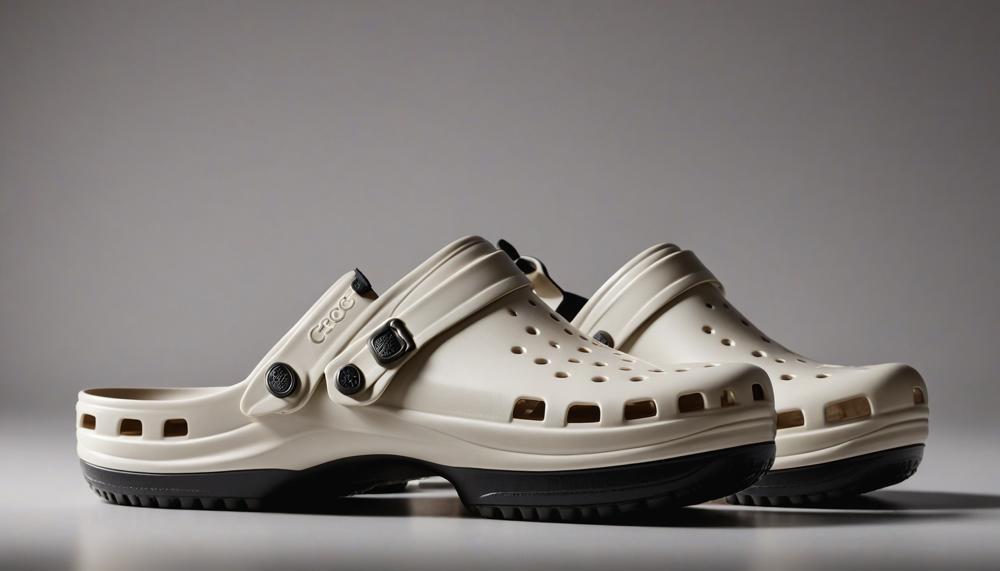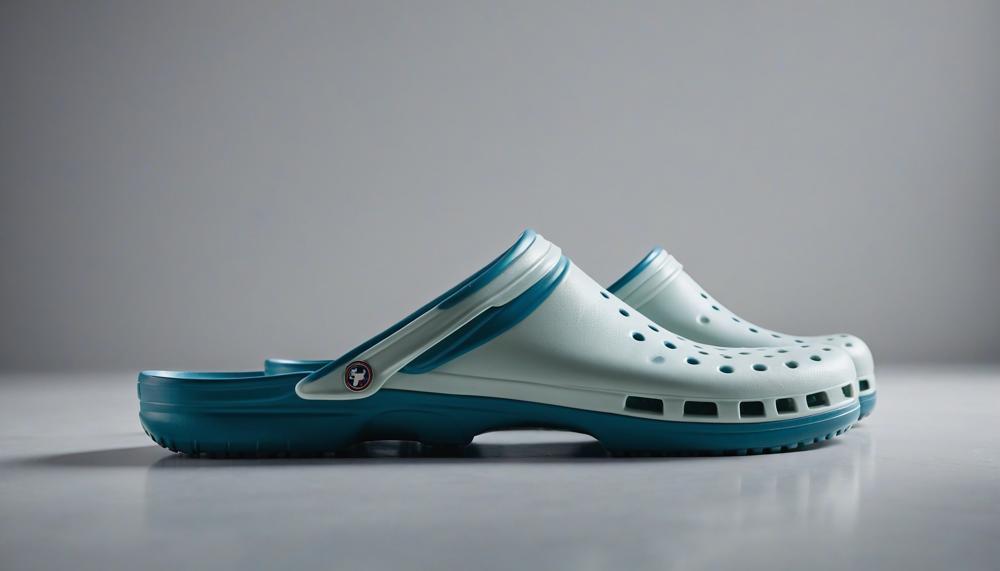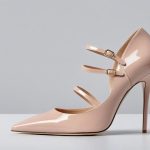No, Crocs are not inherently bad for your feet, but they have limitations.
Crocs have become a beloved choice for their lightweight, breathable design and roomy fit, making them ideal for quick errands, trips to the gym, or lounging at home. They’re especially handy in environments where feet might get wet or dirty, like at the beach, pools, or public showers, thanks to their easy-to-clean material and excellent air circulation. For those with fungal toenails or athlete’s foot, the ventilation provided by Crocs can be a relief.
However, foot specialists caution against relying on Crocs for extended periods or for activities requiring significant support. The lack of arch support and a secure heel can lead to discomfort, blisters, and even foot deformities over time. While Crocs can handle a short run or brief walk, they fall short for long-distance walking or high-intensity activities. The “sport-mode” strap may give a false sense of security, but it doesn’t provide adequate heel support for prolonged use.
Key Takeaways:
- Pros: Lightweight, breathable, easy to clean, suitable for wet environments, good for fungal issues.
- Cons: Lack of arch support, inadequate heel support, potential for blisters and foot deformities with prolonged use.
- Best Uses: Quick errands, gym visits, public showers, beach trips, lounging at home.
- Avoid For: Long-distance walking, exercising, standing or walking for extended periods.
Are Crocs good or bad for your feet?
Contents
The short answer is that Crocs have both benefits and risks for your feet.
Benefits:
Crocs are lightweight, breathable, and roomy, making them ideal for activities like going to the gym, using public showers, post-pedicures, and short outdoor excursions. Their plastic material is easy to clean and promotes air circulation, keeping feet dry and reducing the risk of fungal infections.
Additionally, their easy slip-on design is beneficial for those with mobility issues or disabilities. Crocs can also be used as water shoes at the beach, providing protection and comfort.
Risks:
Despite their advantages, Crocs lack adequate arch support, which can lead to discomfort and potential foot issues such as bunions or metatarsalgia. Foot specialists do not recommend Crocs for exercising, walking long distances, or working due to their insufficient support.
The “sport-mode” strap does not provide enough heel support, potentially causing pain or discomfort during prolonged use. Moreover, their plastic construction can sometimes cause sweaty feet, blisters, and odour.
| Aspect | Benefits | Risks |
|---|---|---|
| Design | Lightweight, breathable, roomy | Lack of arch support, insufficient heel support |
| Material | Easy to clean, promotes air circulation, prevents fungal infections | Can cause sweaty feet, blisters |
| Usage | Suitable for short outdoor activities, gyms, showers, water shoes | Not recommended for long walks, exercising, or working |
| Convenience | Easy to slip on/off, good for mobility issues |
For those seeking more in-depth information, consider reading more on Wikipedia.
What Is So Special About Crocs?
Crocs are considered unique and special due to their blend of comfort, practicality, and distinct design features. Here’s a detailed look at what sets them apart:
- Material and Design:
- Croslite Material: Crocs are made from a proprietary closed-cell resin called Croslite, which is neither plastic nor rubber. This material is soft, lightweight, and resistant to odour, providing comfort and hygiene.
- Ventilation Ports: The shoes feature multiple ventilation holes that promote airflow, keeping feet cool and dry. These holes also allow water and debris to drain away easily, making Crocs ideal for wet environments.
- Functionality:
- Waterproof: Designed to be waterproof, Crocs are perfect for activities around water, such as boating, fishing, or beach trips.
- Non-Slip Soles: The soles of Crocs provide excellent traction on wet and slippery surfaces, enhancing safety during use.
- Comfort and Versatility:
- Ergonomic Design: Crocs offer a roomy fit and a contoured footbed that supports the natural shape of the foot. The lightweight nature reduces fatigue during prolonged wear.
- Easy Maintenance: Crocs are easy to clean, requiring just soap and water, and they dry quickly, making them low-maintenance footwear.
- Ease of Use:
- Slip-On Design: Inspired by traditional clogs, Crocs can be easily slipped on and off, adding to their convenience for quick errands or casual outings.
- Adjustable Straps: Some models feature a pivoting heel strap for a secure fit, offering versatility between a clog and a sandal.
- Broad Appeal:
- Wide Range of Styles and Colours: Crocs come in various styles, from classic clogs to sandals and loafers, catering to different tastes and occasions. They are available in a rainbow of colours, allowing for personal expression.
- Customization: Crocs can be personalized with Jibbitz charms, small decorative pieces that fit into the ventilation holes, adding a fun and customizable element to the shoes.
What Are the Pros and Cons of Crocs?

The short answer is that Crocs offer several benefits for foot health but also come with some drawbacks.
| Benefit | Description | Drawback | |
| Lightweight and Breathable | Ideal for activities like gym visits, public showers, and short runs due to their light, airy design. | Lack of Arch Support | Not suitable for long periods of walking, exercising, or work due to insufficient arch support. |
| Easy to Slip On and Off | Convenient for individuals with mobility issues or disabilities. | Inadequate Heel Support | The “sport-mode” strap doesn’t provide enough heel support, potentially leading to foot pain and deformities. |
| Easy to Clean | The plastic construction allows for simple cleaning, preventing fungal and bacterial growth. | Not Orthotic Friendly | Foot specialists do not recommend them for use with custom orthotics or over-the-counter inserts. |
| Water-Friendly | Can be used as water shoes at the beach or pool, providing versatility. |
Do Podiatrists Recommend Crocs?
The short answer is yes, but with some important caveats.
Podiatrists generally agree that Crocs can be safe and beneficial for certain activities and individuals. Their comfort and cushioning make them a suitable choice for people needing extra foot support, such as those with reduced fat pads in their feet, pregnant women, diabetics, and individuals with swollen feet.
However, their suitability heavily depends on the context of use.
| Situation | Podiatrist Recommendation | Details |
| Daily Walking | Caution | Crocs lack adequate arch and heel support for prolonged walking or exercise. Consider alternative footwear for these activities. |
| Home Use | Safe | For wearing around the house, Crocs provide good cushioning and comfort. Be cautious of their wide fit, which can cause trips or slips, especially when moving quickly. |
| Special Needs | Beneficial | Pregnant women, diabetics, and those with swollen feet may find Crocs very comfortable due to their cushioning and roomy design. |
| Outdoor Activities | Not Recommended | For vigorous activities, opt for shoes with better arch support and stability. |
Podiatrists emphasise the importance of matching the right shoe to the right activity. For more intensive activities, shoes with robust arch and heel support are recommended. For casual, around-the-house wear, Crocs can be a comfortable option. However, always consider individual foot health needs and activity levels when choosing footwear.
Your Crocs Probably Aren’t Causing Your Heel Pain
No, wearing Crocs does not typically cause heel pain. In fact, they can help alleviate it if chosen correctly.
Crocs, known for their lightweight design and cushioning, are generally suitable for casual wear and can provide significant comfort. However, whether they contribute to heel pain largely depends on the specific model and the individual’s foot health. Crocs come in various styles, some with excellent arch support and cushioning, such as the Heel Seat Clogs, which are specifically designed to relieve heel pain. These models provide necessary support and can help in distributing weight evenly, reducing strain on the heel.
Why Crocs Might Not Cause Heel Pain:
| Feature | Benefit | Considerations |
| Arch Support | Reduces heel strain | Choose models with built-in support |
| Cushioning | Distributes weight evenly | Ensure adequate padding |
| Lightweight Design | Decreases foot fatigue | Avoid prolonged use on uneven terrain |
| Breathability | Prevents foot swelling | Not ideal for intensive activities |
However, prolonged use of Crocs that lack adequate arch support and heel cushioning could lead to discomfort or exacerbate existing conditions. For individuals with specific foot health issues, selecting Crocs models designed with supportive features is crucial.
Conclusion
Crocs are not inherently bad for your feet, but their use requires discernment. These lightweight, breathable shoes excel in convenience and versatility, making them a popular choice for casual, everyday wear. Their easy-to-clean material and roomy fit are particularly beneficial for activities around water or in environments where hygiene is paramount. For those with fungal toenails or athlete’s foot, the superior ventilation provided by Crocs can be a significant advantage.
However, podiatrists warn against wearing Crocs for extended periods or activities requiring substantial foot support. The primary drawback lies in their lack of arch and heel support, which can lead to discomfort, blisters, or even foot deformities over time. While the “sport-mode” strap may offer a snugger fit, it doesn’t compensate for the absence of structural support needed for prolonged walking or high-intensity activities.
In essence, Crocs shine as a convenient, comfortable option for short errands, gym visits, or lounging at home. They are ideal for wet environments, offering a blend of practicality and comfort. However, for long-distance walking, exercise, or any activity demanding significant foot support, opting for more robust footwear is advisable.






